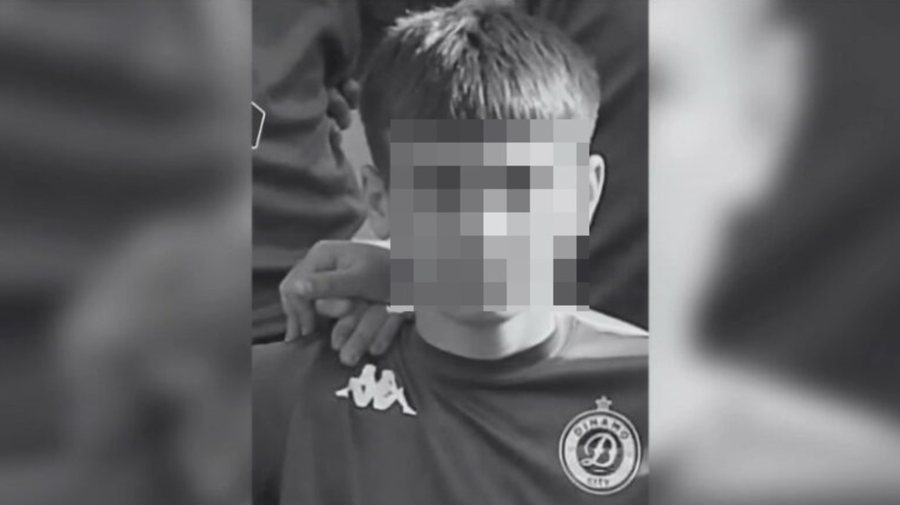
By Lutfi Dervishi
"I was extremely shocked... I couldn't watch the video."
The words of the mother of the 14-year-old boy killed in November 2024 are not simply a confession of pain. They are a strong indictment of an act that should have been professional.
A few hours after the release of the footage showing the murder, the journalist who first published it said that "it was between two decisions: professionalism and shedding light on the incident." He chose the latter. "I published it so that it would not be forgotten and that justice would be done," he said, taking responsibility. But is publishing a video of a minor, in the last moments of his life, the way to seek justice?
In this case, the journalist probably took into account some precedents that if he does not exert pressure on justice, justice may be distorted.
The case of K. Rashe is still fresh, where the police attempted to manipulate the murder of the young man and blame the victim. It was the pressure of the media and the public that stopped the manipulation and the Minister of Interior resigned.
Even for the tragic event, there was no shortage of misinformation and manipulation. The Prime Minister launched an entire false campaign as if TikTok was to blame for the event, and many of the initial details in the report were also inaccurate.
TikTok was closed by government decision for a year, while the case of the murder of the 14-year-old is in court.
One motive of the journalist and the media that published the news may have been the need to pressure the judiciary to do justice and not to kill the victim and his family a second time.
Law, ethics and the line that was crossed
The publication of the footage was in clear violation of the journalist's code of ethics, which requires not to publish any material related to minors, especially without the consent of the family. Also, the AMA Broadcasting Code, the Law on Audiovisual Media, and the Convention on the Rights of the Child prohibit the dissemination of violent images that violate the privacy of minors and their dignity.
In this case, it was a publication that is part of the investigative file that exposed a family's pain and set a precedent: the more horrific the image, the more clickable the event.
In another country on the continent, in prestigious newsrooms like the BBC or agencies like Reuters, this material would not have been published without maximum protection of identity and only in the event of extraordinary public interest.
At the BBC, images of child victims are only published when the public interest is "extremely high" and always with the identity protected. The editorial code in Britain requires the media to act with discretion in cases of pain and shock.
UNESCO's guidelines clearly state: "Minimize harm."
The publication of the video of a 14-year-old boy in the last moments of his life is not the first case, but it is perhaps another serious case where ethical discussions are opened.
Similar cases in the past (TikTok, Fier, Elbasan) have been punished by the AMA with fines or warnings.
Previous cases should have served as a lesson, but it seems that institutional and professional memory is not very strong. In recent years, we have seen many cases that produced the same ethical debates, the same comments and then… the same silence. Often the regulator's punishment is symbolic: a warning, a fine that does not scare anyone, while the wounds that open in the public are deep and repeated.
Tragic events are part of life. It is the media's duty to report them, but unlike publications on social networks, more is expected of professionals. With more ethics and responsibility.
This case could serve as a turning point, but it could also be the next episode that is forgotten until the next ghastly event.
In an era where brutal videos have become like steroids for online traffic, newsrooms are often at risk of confusing “public interest” with “interest in the public.” While the Code of Ethics states that the media exists to serve the public, not its curiosity. The 14-year-old’s incident left us with a bitter taste: Laws and institutions exist, but the ethical muscles to implement them in real time are lacking.
In the age of videocracy, strong protocols are needed for victim videos: image blurring and verification, and always the old question: if a friend/family member of mine were involved in this event, how would I act?
In the new technological environment, journalists compete not only with each other, but also with algorithms. Social networks and digital platforms like TikTok or YouTube have become terrains where pain turns into content, trauma into "trends" and victims into objects of visual consumption. Artificial Intelligence adds another layer of risk: the manipulation of images and the viral spread of fake news is happening faster than ever. In this reality, media professionals must not only inform, but also filter, and not be slaves to the algorithm. The task of "doing no harm" becomes increasingly difficult, but also more vital.
In this specific case, the crux of the debate remains "justice."
But should justice be sought through shocking images, or should we expect institutions to function and the media to preserve human dignity? When a video shows the death of a child, we can help ensure justice is served, but in this case it is also an abuse of pain.
If the media cannot protect the dignity of a child who can no longer speak, how will it protect the public's right to be informed in a humane, honest, and professional manner?
The future requires a profound rethinking of the relationship between media, institutions, and technology. A new moral agreement is needed: a code of ethics that is actually enforced and a clearer legal framework for the use of sensitive content.
Not everything that can be published should be published.
Some things should be left in silence, not out of fear, but out of respect. (A2 Televizion)











